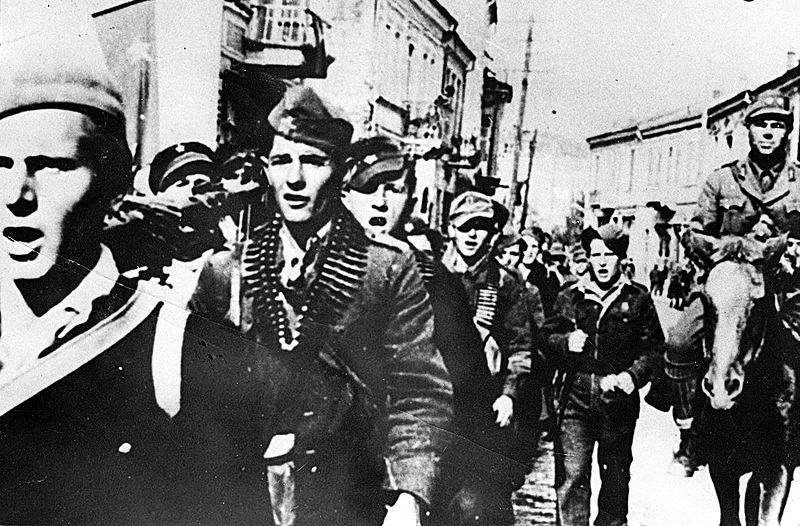Yugoslav Partisans marching through the liberated city of Bitola, Macedonia in 1944. Partisan victories over fascism in Yugoslavia led to social revolution that swept away capitalist rule.
Original Facebook Note #14 published 29 November 2015
“Grouping and mutuality of countries and peoples in the Balkans is the only road that leads to economic, national and political liberation.”
–Dimitrije Tucović, Serbian social-democrat; Balkan Socialist Conference 9 January 1910
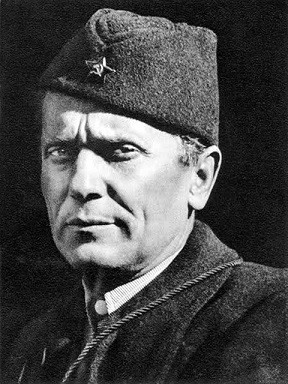
In the Second World War there were two countries that had liberated themselves from the Nazi occupation, and whose social revolutions did NOT depend on the help from the Red Army, much less the Allied powers. One of those was Albania, the other was Yugoslavia. 29 November 2015 marked the 70th anniversary of the victory of the Yugoslav Revolution, a liberation not only from fascism but all elements of capitalism. The victory came from the Communist-led Partisans who combined class struggle with national liberation through guerilla warfare under the Croatian-born Communist Josip Broz Tito. This created the Socialist Federal Republic of Yugoslavia in 1945 after the League of Communists was voted into power. Although the overthrow of capitalism was achieved and Yugoslavia adopted a collectivized and planned economy, power was in the hands of a bureaucratic caste, and therefore was a deformed workers state. But despite the Stalinist structure, Socialist Yugoslavia fought to overcome the sectarian nationalist hatreds that came with centuries of imperialist colonial divide and conquer which had plagued the old Yugoslavia. Tito’s policy was known as “Brotherhood and Unity” that ratified this new equality.
In all the capitals and major cities of the former Yugoslav workers state commemorations of its revolution and the defeat of fascism were held by left-wing groups and elderly Partisans. Socialist Yugoslav flags and portraits of Tito were displayed from Belgrade to Novi Sad, Zagreb, Sarajevo, Ljubljana to Skopje and Podgorica (Titograd). The Yugoslav anthem and the Internationale were sung. These were displays of resentment directed at the capitalist mobsters and thieves that govern the former Yugoslavia who continue to deprive young people of opportunities and attack pensions. The same ones that thrived while the capitalist counter-revolution unleashed a sectarian multi-sided bloodbath in its aftermath.

A Yugoslav state was born from both inter-imperialist wars. The First World War began with the Austro-Hungarian attack on Serbia (28 July 1914) in response to Belgrade’s alleged involvement with the assassination of Archduke Franz Ferdinand and his wife the Duchess Sophie Chotkova on 28 June 1914. The Serbian social-democrats took a position of revolutionary defeatism and refused to defend Serbia, a stooge of Russian imperialism. In fact, they were the only ones out of six in the Second International to stand firmly opposed to both the Allied and Central imperialist warring blocs. The other five were the Bulgarian, Russian, Romanian, American, and Irish social-democrats. While the rest in Germany, Great Britain, and elsewhere the social-democrats reversed themselves and became bloodthirsty warmongers voting for war bonds and wrapping themselves in their colors of patriotic chauvinism. After the First World War, the Kingdom of Yugoslavia was established by the Allied imperialists. It was hardly the egalitarian socialist Balkan federation envisioned by the revolutionary Serbian Social-Democratic Party. Due to their fierce and determined fight against the Central powers, the Serbian Kingdom was awarded the leadership of Yugoslavia under the Karadjordjević dynasty by the Allies.
In October 1917, Vladimir Lenin led the Russian Revolution that ripped the country from grip of the capitalists, closed the Eastern Front, and established the world’s first workers state based on soviet (workers council) rule. In an effort to crush workers rule out of fear of their own at home and reopen the Eastern Front, the Allied and Central imperialists sponsored the counter-revolutionary Russian White Army, including invasion of the Bolshevik state in a vain attempt to murder it. The Serbian king Petar I dispatched Serbian troops to northern Russia on behalf of his boss Winston Churchill to assist U.S and British troops supporting their White “Orthodox brothers” against the “godless Bolsheviks”. But two years later the Red Army destroyed the White Army in the region and beat back their supporters forcing them to withdraw. Bolshevik Russia came out victorious, the counter-revolution smashed, the invaders returned home and declared war on labor at home. Yugoslavia was no exception, especially after the founding of the Communist Party of Yugoslavia. Trade unions were banned, and striking workers were violently suppressed by the police throughout Serbia and the rest of the country.
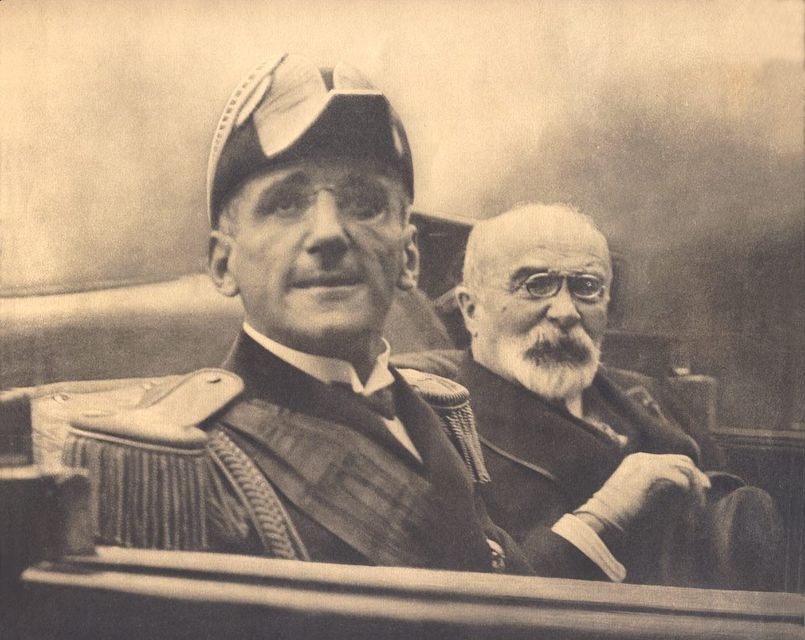
An example of this was the police’s violent crackdown on the 1920 miners’ strike in Tuzla, Bosnia that left 4 miners dead and scores injured. In addition to the anti-working class policies, the non-Serb nations of the Kingdom were subjected to Serb chauvinism and domination. This increased under Aleksandar I as Croat, Slovene, Macedonian, and Albanian parties had their role restricted from their own affairs. Nationalists in Croatia founded the Ustashe Movement and linked with the IMRO (Internal Macedonian Revolutionary Organization) in exile. In 1934 Aleksandar I was killed in Marseilles, France by IMRO activist Vlado Chernozemsky who unloaded his Mauser pistol into the monarch as well as the chauffeur and the French foreign minister. The King’s cousin Prince Pavle took over the government as regent until his nephew came of age. Back in Yugoslavia the reaction was renewed tighter control on the growing hunger for separatism in the non-Serb regions as well as dissent, particularly the Communist Party that had gained strong support among Yugoslav workers. It was during this period that Josip Broz Tito would appropriately denounce Royal Yugoslavia as a “Prison of Nations”.
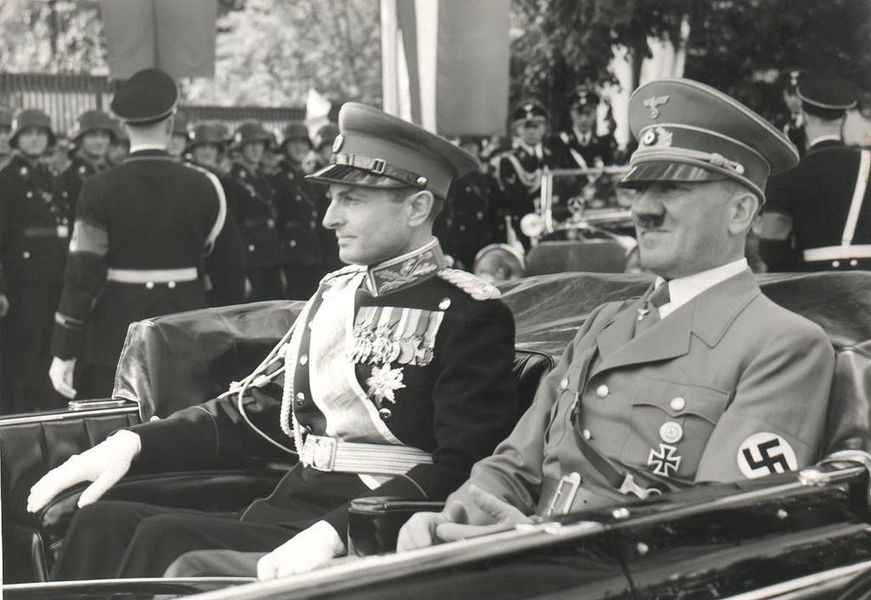
In 1941 Europe was in its second year of World War II, with much of the continent being under the Nazi jackboot. The second inter-imperialist war found its way to Yugoslavia. With the war seemingly going in favor of Adolf Hitler, Prince Pavle signed the Tripartite Pact on 25 March and became an ally of Germany with major restrictions including acting as a noncombatant. Two days later, Winston Churchill struck back with a coup led by Yugoslav military officers that deposed Prince Pavle, and gave power to the teenage king Petar II, thereby pulling Yugoslavia out of the Axis bloc. But on 6 April it was the Nazis who dealt the final blow to the British in the Balkans, and invaded Yugoslavia along with their Italian, Hungarian, and Bulgarian allies. It began with a three-day massive bombing campaign of Belgrade by the German Luftwaffe that disrupted the Yugoslav command structure and causing heavy civilian casualties. Serbia being the central monarchy of Yugoslavia bore the brunt of the bombing and invasion, and in less than two weeks the Yugoslav Royal Army surrendered to the fascist invaders. Units in Slovenia, Croatia, Bosnia, and Macedonia quickly surrendered without a fight and welcomed the German troops as liberators after living as second class citizens in a Serbian dominated monarchy. The Yugoslav government, including the young monarch Petar II fled to England and formed a government-in-exile, never to return.
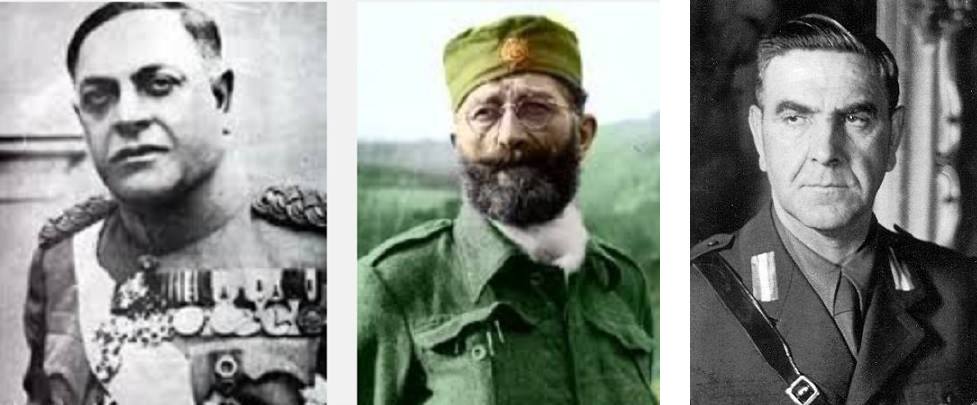
The Axis occupiers then proceeded to carve up Yugoslavia among themselves. Slovenia was trisected and annexed by Germany, Italy, and Hungary with the capital city Ljubljana ending up in the Italian sector. An auxiliary force the Slovene Home Guard was founded under the ex-Yugoslav general Leon Rupnik, an ardent fascist. The arrival of Nazi tanks and troops in Zagreb established the clerical-fascist Independent State of Croatia (which included the whole of Bosnia-Herzegovina) under the Ustasha led by Ante Pavelić. Military units were reorganized into a Croatian Legion that later participated in the Nazi-led attack on the USSR, while order was maintained by a Home Guard and Ustasha auxiliaries. The Italians took Montenegro and imposed their hegemony. They found service in a Montenegrin separatist militia called the Greens led by Krsto Popović. The Bulgarians occupied Macedonia along with the Germans and established their order. The Italians having already taken Albania the year before took Serbia’s Albanian populated region of Kosovo and created a Greater Albania. The Hungarians annexed Serbia’s northern region of Vojvodina. In what was left of Serbia the Nazis installed a puppet junta under the former Yugoslav general Milan Nedić. Two auxiliaries were formed: the Serbian State Guard and the Serbian Volunteer Corps, and were aided by Chetnik militias. Later the Russian Corps was formed by White Russian emigres to further assist the fascist regime.

The Nazis also created SS units of local volunteers, the three most famous being the SS Prinz Eugen Division (Danube Swabians), SS Skanderbeg Division (Kosovo Albanians), and the SS Handzar Division (Bosniaks) for which Bosnia’s future Islamist president Alija Izetbegović was a recruiter for. The euphoria over the death of the Prison of Nations would soon diminish as the reality of fascist rule set in later. The Nazis brought the Nuremberg Laws and the Final Solution with them. Slovenes had their language banned and were expelled from their lands at gun point by Nazi, Italian, and Hungarian troops; while Jews, Gypsies, and Slovenes who refused to leave were murdered. The Croatian Ustasha regime of Ante Pavelić was the Nazis’ most important and powerful ally in the Balkans, and even had the blessing of the Catholic Church. Concentration camps were set up all over Croatia that by the end of the war the Ustashi had been responsible for the deaths of nearly a million Serbs, Jews, Gypsies, homosexuals, and Croatian anti-fascists, the most notorious being the Jasenovac camp. Methods of killings by the Ustashi involved creative acts of mutilation of camp victims with specially made knives at the wrist known as “Serb killers” that even shocked the most hardened Nazi SS men.
In Kosovo the Albanian SS and the fascist militia Balli Kombetar went on a widespread killing of Serbs, Goranis, Gypsies, Jews, and Albanian anti-fascists. Hungarian forces of Miklos Horthy set about a cleansing operation that involved terror, intimidation, deportation, theft, and mass killings of Serbs, Jews, and Gypsies to make space for Hungarians to claim the stolen properties. The most famous was the 1942 Novi Sad Raid where the Hungarian Army murdered over 3,000 civilians to show who was boss. That same year in Serbia proper the country was declared Judenfrei (Jew free) by the fascist junta and their Nazi overlords. The widespread murder of anti-fascists, gays, and Gypsies continued. In Macedonia, the Bulgarian Army of Tsar Boris III with limited assistance from the Nazis deported over 7,000 Jews to the Treblinka death camp where but 400 survived. This excluded the death of Gypsies and anti-fascists. The fascist occupation and carve up of Yugoslavia did not go unchallenged. The Communists rightly adopted revolutionary defeatism and refused to take a side in the brief war between the Axis imperialists and the Yugoslav monarchy, a stooge of British imperialism.

Until June of 1941 the only resistance was a band of renegade pro-British Serbian Chetniks under the former Yugoslav general Draža Mihailović who still maintained loyalty to the exiled Yugoslav monarchy, whose war for a Greater Serbia involved the mass killings and cleansing of non-Serbs. But this changed on 22 June 1941 with the Nazi-led attack on the USSR that included the Croatian Legion, and the Communists had a duty to wage war against the fascist bloc in defense of the world’s only workers state. The Yugoslav Communist Party under Josip Broz Tito organized the Partisan resistance movement to take up arms against the fascist occupiers and their local puppets throughout as well as socialist revolution. The Partisans were men, women, trade unionists and labor activists, former soldiers, workers, peasants, and leftists. They would give sanctuary to all those fleeing the the Nazis and Ustashas, as well as non-Serbs fleeing the Chetnik cutthroats. The Partisans consisted of all peoples from Yugoslavia: Serbs, Croats, Slovenes, Montenegrins, Macedonians, Slav Muslims (Bosniaks and Goranis), Rusyns, Jews, Gypsies, ethnic Slovaks, ethnic Italians, ethnic Albanians, ethnic Hungarians, Vlachs (ethnic Romanians), and Danube Swabians (ethnic Germans).
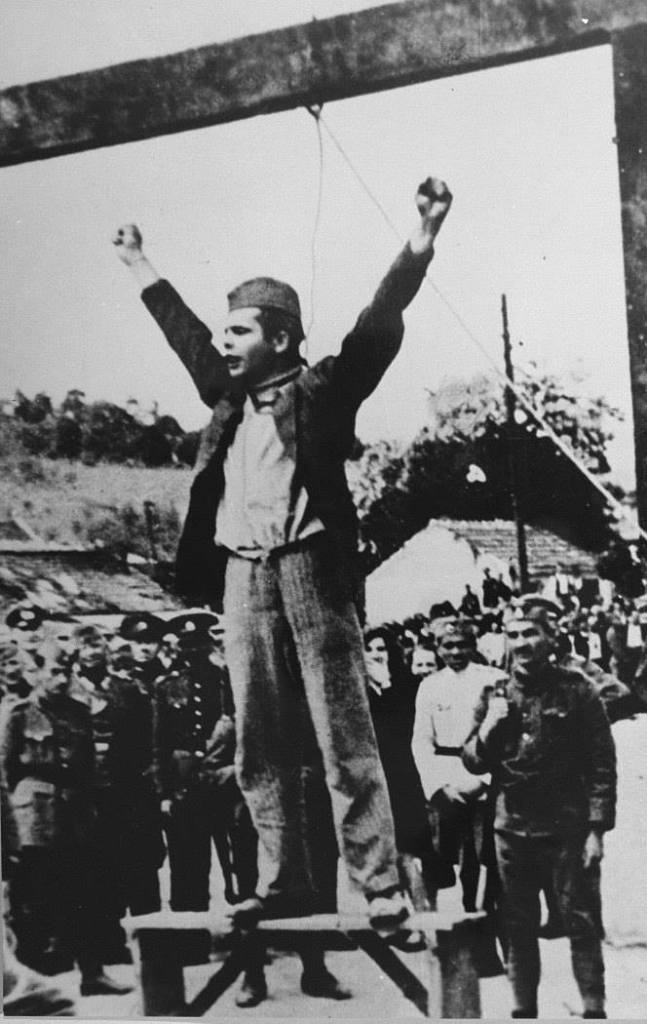
As the resistance spread like a wildfire, Yugoslavia’s mountainous and forested terrain and winding roads soon turned into a nightmare for Hitler’s armies and the collaborators. Fascist convoys and targets found themselves under constant and deadly ambushes from an enemy that then vanished as quickly as it appeared. Initially armed with Yugoslav weapons and despite the occasional drop from the Soviets, the Partisans were so effective that they were armed with primarily Axis made weapons captured from attacks. Desperate the Nazis announced that 100 civilians would die for every soldier killed. They had also engaged the Partisans in three major offensives inflicting heavy casualties and killing scores of civilians. In each case Draža’s “anti-fascist” Chetniks allowed fascist columns to move through their areas unchallenged. But the Partisans were once again able to replenish and regain control of the areas. 1943 saw some great blows against the fascist bloc. At Stalingrad the Red Army had encircled and pulverized the Nazis’ best armies and that of their allies, including the Croatian Legion. This motivated the Partisans to increase their attacks. Draža’s Chetniks collaborating with the fascists became an embarrassment for the British and the exiled Yugoslav monarchy that they were officially disowned. And the Allied bloc shifted support to the Partisans when it became undeniable that they weird doing the most damage to the fascists.
That year, the Germans and their allies launched their two most infamous offensives in Neretva and Sutjeska against the Partisans inflicting heavy losses but achieving pyrrhic victories only and killing thousands of civilians in reprisals. The Chetniks were severely decimated after their engagements against the Partisans. The Partisans were able to break though German lines and continue their struggle. When the Americans landed in Italy afterwards, the ruling class in Rome split in two. Italian troops were pulled from the Balkans and the king Vittorio Emanuele III toppled and arrested his partner in crime Benito Mussolini and sought peace with the Allies. But Mussolini was later freed by a daring Nazi covert operation and reorganized the fascists who slowed the Allied advance. In response the Nazis and the Ustashi launched a sixth offensive that only briefly disrupted Partisan operations, and once again destroyed many villages in a futile attempt to show who was boss. By 1944 as the Soviets were beating back the Nazis, most of their allies had fallen. The fascist occupation was approaching its nadir as ongoing assaults by the Partisans eroded their areas of control and severing their supply and communications lines.
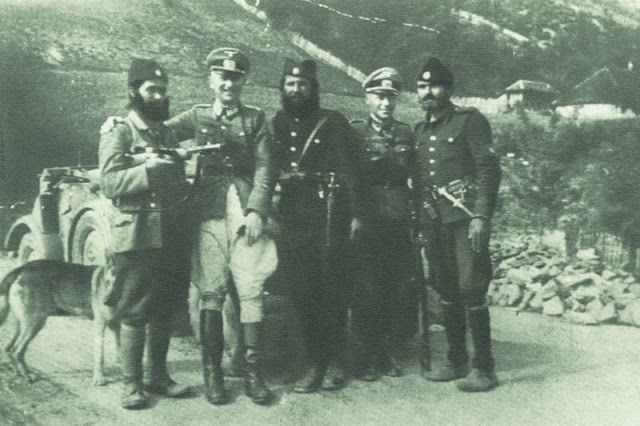
In May the Nazis backed by Ustashi and Chetniks launched their seventh and final offensive against the Partisans, this time with the objective to decapitate them by killing Tito and wiping out the entire command structure in Bosnia’s Drvar region. Though several key figures were lost, Tito escaped and the Partisans managed to halt the offensive. They retreated temporarily but reclaimed the region with in days. In September, the Red Army liberated Bulgaria, and its army withdrew from Macedonia. With the Soviets just over the border, the Partisans launched their own offensive liberating Macedonia, and then Kosovo. The Red Army followed and backed a month long Partisan offensive against the Serbian junta. As the Germans, Serbian auxiliaries and Chetniks fled into Croatia, the Partisans then drove the German and Hungarian forces out of Vojvodina and parts of Slovenia. The Russian role was limited to mop-up operations. And in December, the Partisans had liberated Montenegro. From the cities of Belgrade, Novi Sad, Pristina, Skopje, Tetovo, and Podgorica the joyous celebrations echoed into the air as crowds embraced the Partisans as liberators, greeting them with flowers, hugs, and kisses. In Belgrade the Red Army entered behind the Partisans into the arms of grateful Serbians.

With half of Yugoslavia liberated, the Partisans then targeted the Croatian Ustasha regime. In early 1945 the Partisans swept through Bosnia forcing the Ustashas to retreat to Croatia proper. Sarajevo saw the death of Partisan leader Vladimir “Valter” Perić, a Serb who has become the symbol of Bosnia’s multinationalism. The city mourned a hero, but the jubilant crowds welcomed their liberators. As the Battle of Berlin raged the Partisans backed by the Soviets swept through liberating Croatia and Slovenia. Zagreb and Ljubljana were lit up with celebrations as the Partisans arrived and the fascists retreated, as the rest of Yugoslavia was liberated. After the Soviet victory in Berlin prior to surrendering to the Partisans, German Luftwaffe general Alexander Löhr informed Pavelić of the Nazi surrender, leaving the Ustashi on their own. Pavelić ordered the Ustashi, Chetniks, White Russians, and Slovene auxiliaries to fight their way to British and American lines in Austria to surrender. The goal was to appeal to the Allies’ anti-Communism and become volunteer troops in a future war against the USSR as they had been for the Nazis. And with any luck, the Ustashi would obtain official Allied recognition as Croatia’s legitimate government.
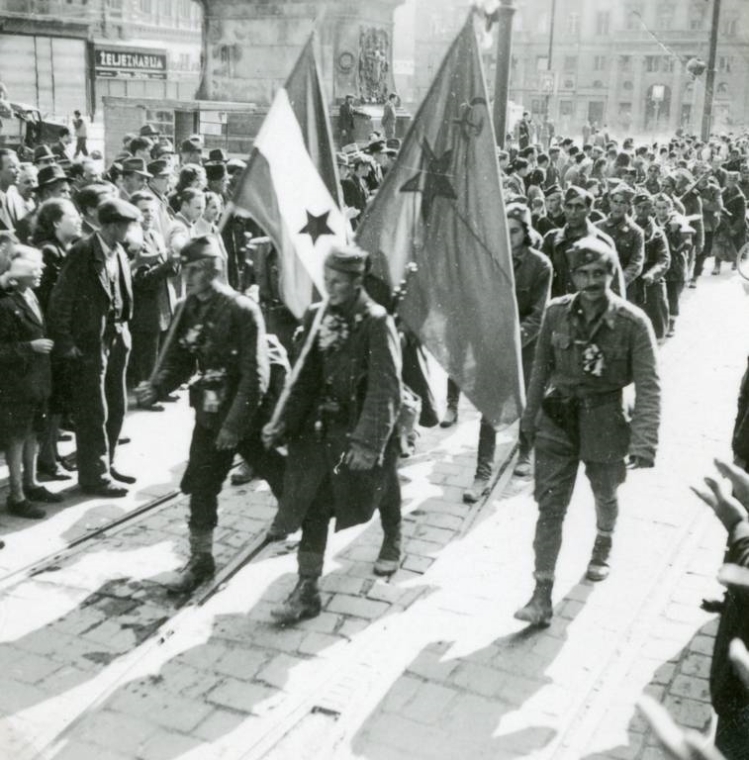
But the Allies were bound by treaty with the Soviets to repatriate all fascist troops from the East, the most famous being the Cossacks. The Ustashas and other collaborators (numbering in the tens of thousands) were sent back to Yugoslavia after surrendering to the British in Bleiburg, Austria and were executed as punishment by the Partisans. Remnants of Mussolini’s and Horthy’s thugs attempted remain on Slovenian lands and Vojvodina were also dealt with accordingly in what became known as the Fiobe and Bačka killings. Today these post war actions by the Partisans have been capitalized on by anti-Communists who have shed tears for and canonized these fascists as “Victims of Communism” even today going as far as to absurdly compare them with Auschwitz victims. Among these even included Krsto Popović, Gen. Milan Nedić, Draža Mihailović, and Leon Rupnik all of whom were executed by 1947. Ante Pavelić and numerous Ustasha leaders managed to escape justice with help from the Vatican and the British, thus ending up in the Americas, Western Europe, and Australia involved global anti-Communist organizations through their newly founded emigre movements, absolved of their crimes.
The bulk of the Ustasha leadership, including Pavelić, ended up in Argentina serving as advisers and trainers for the junta, as well as other Latin American dictatorships. This included death squads in Guatemala and El Salvador, and the Contras in Nicaragua. Some Chetniks such as the self-appointed Vojvoda or Duke Momčilo Djujić also managed to evade capture. On 28 November 1945 elections were held, the Communist Party of Yugoslavia (renamed the League of Communists of Yugoslavia) won an overwhelming victory with Josip Broz Tito as leader, and Yugoslavia was now a workers state allied with the Soviet Union. The Partisans were reorganized into a modern conventional Yugoslav People’s Army (JNA-Jugoslovenska Narodna Armija), that eventually became the fourth largest army in the world. The capitalists, landlords, and other war profiteers having fled with the fascists, carrying out the social revolution was done with ease. Yugoslavia’s new revolutionary reforms secured jobs, healthcare, housing, and education for all. Illiteracy was soon a memory. Church and state were separated for the first time. Nationalism was heavily suppressed. Women whom were deprived of any rights in Royal Yugoslavia were also given rights to education, divorces, work, and abortion.
However, Yugoslavia was deformed workers state, embracing Stalinism the Party ceased to be revolutionary and defended the privilege of the bureaucracy of which Tito was head. The democratically elected workers councils that brought the Bolsheviks to power in 1917 in Russia were absent. The Yugoslav workers state would be subjected to the same corruption and economic mismanagement that eventually set the stage for the bloody counter-revolution that would eventually come. In fact Tito, like Stalin, demonstrated he was no friend of Bolshevism, international class struggle, and Marxism-Leninism. Having served as one of Stalin’s henchmen in Spain, he enforced the popular front that prevented the fight against fascism from turning into an all-out workers-led class war for a Red Spain, leading to Franco’s victory. In 1939 Tito attacked the Trotskyists as being responsible for failures of the struggle in China and Spain even though the Stalinist program of class collaboration in both countries was adopted. In that same essay Trotskyism and Its Helpers, Tito even cynically denounced the Belgrade Trotskyists for their revolutionary defeatism in not defending Czechoslovakia (a lackey of the British that Leon Trotsky appropriately denounced as a “crippled gangster of imperialism”) from the Nazi invasion the year prior. The same Czechoslovakia that had its legions in Russia fighting against Bolsheviks through the implementation of White Terror against organized workers and peasants!
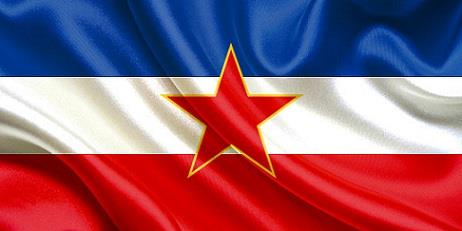
In a typical Stalinoid zigzag, Tito would ironically call for revolutionary defeatism in April 1941 when the Nazis attacked royalist Yugoslavia, no less of a crippled gangster of British imperialism than Czechoslovakia. Though it can be said that the Nazi-Soviet Pact played a role in Tito not calling for armed resistance at the time of the invasion. There was even a point when Tito jeopardized the Yugoslav Revolution in 1944. That year Churchill and Stalin drew up the “Percentages Agreement” involving postwar spheres of influence. Yugoslavia would be split 50-50, and the British brokered a treaty on the Allied-occupied island of Vis (Croatia) which Stalin pushed Tito to accept. The treaty was signed by Tito and Ivan Šubašić, prime minister of the exiled Yugoslav monarchy in which the Communists agreed to form a post-war coalition government with the Royalists, thereby preserving capitalism. Fortunately, this treaty proved impossible to implement in the end since there was no significant bourgeoisie or landowners left in Yugoslavia after liberation as they fled with the Nazis. Plus the exiled monarchy was discredited by the masses beyond hope. Churchill and Stalin had little choice but to allow Tito to carry out the social revolution after the Communists were elected by popular vote.
In addition to the intent of class collaboration, there was the reactionary collective guilt towards Danube Swabians for the crimes of the Nazis despite the official new policy of Brotherhood and Unity. Yugoslavs of German ancestry were declared hostile to the Revolution and were expelled from lands they lived in for generations, whether or not they were collaborators. Ethnic Germans who were Partisans and their families were exempt from this collective punishment, as were those who assisted the struggle by giving aid to the Partisans. Whereas the actions taken by the Partisans against the Italians in Slovenia and Hungarians in Vojvodina were restricted only to fascists, the targeting of ethnic Germans was not. Out of a population of about 300,000, the number of collaborators among Danube Swabians was around 100,000. The crimes committed by the SS Prinz Eugen Division against civilians were barbaric, this division was among the cruelest of the Waffen-SS. The punishment its members received was a good thing. But this vengeful collective vilification of Yugoslavs of German descent for Nazi war crimes was nothing less than counter-revolutionary.
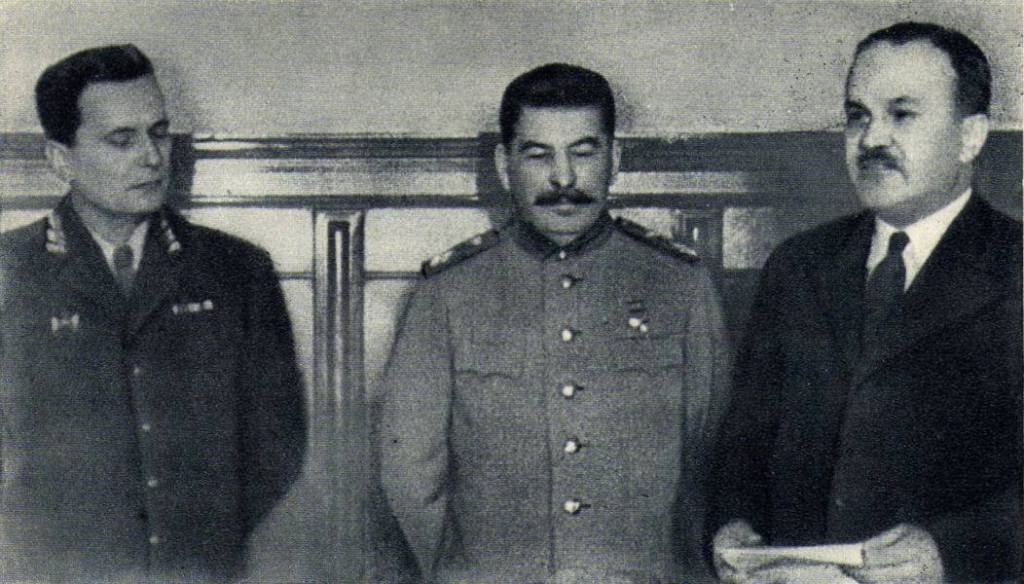
Stalin’s nationalist dogma of Socialism in One Country embraced by Tito would eventually cause Belgrade and Moscow to butt heads. This was counterpoised to Marxist ideology of international proletariat solidarity. Whereas Stalin wanted a single socialist bloc with himself at its head as leader of world socialism, Tito felt that because Yugoslavia was liberated by the Partisans, he should have his own independent Balkan socialist bloc. This was to consist of Yugoslavia, Albania, Bulgaria, and Greece. The Communists headed the Greek Partisans against the German occupation just as in Yugoslavia. Greece at the “Percentage Agreement” was decided to be 90% British and 10% Soviet. The Communist Party of Greece (KKE) following Stalin’s line refused to seize power when the opportunity was perfect, after the Nazis withdrew along with most of the Greek bourgeoisie. Only when the British-backed anti-Communist thugs returned (many who had been Nazi collaborators) and began killing Communists and massacring villages that supported the Partisans, did the KKE attempt to seize power beginning the Civil War. Support for the Greek revolutionaries came primarily from Yugoslavia, and some support came from Bulgaria and Albania. Stalin left the Greek Communists to be slaughtered by the Greek Army and the British, sacrificing them as if they were pieces on a chessboard. Indeed this could have very well been the fate of Yugoslav Communists had Tito persisted in standing by the Treaty of Vis.
Stalin then dealt with the troublesome Tito. Yugoslavia was expelled from the East bloc in 1948. In Albania the conflict had split the bureaucracy to which its leader Enver Hoxha emerged triumphantly and allied with Stalin. Bulgaria’s Stalinist leader Georgi Dimitrov whom had been supportive of Tito’s proposed Balkan bloc, failed to come to an agreement with Tito on the status of Macedonia and joined in castigating Yugoslavia. In the East bloc a new wave of purges against the “Trotskyite-fascistic-Titoist” elements lead to arrests and executions. Tito in turn replied by purging Yugoslavia of “cominformists”. Mass arrests were made of Yugoslav party members who were for remaining in the Soviet sphere. Yugoslavia now isolated had no choice but to be at the mercy of imperialism. Notably the United States was overjoyed at seeing a workers state reject Moscow and used it as an anti-Soviet smear campaign. Washington then began subsidizing Yugoslavia with aid and loans, which would have drastic effects in the long run despite the high living standard. The West soon realized that they could not control Tito but decided to put him off until a later time. Yet Tito continued to maintain Stalin’s illusion of peaceful coexistence with imperialism even when faced with hostility. Due to Yugoslavia having been ripped from the capitalists’ grip, it was no less of a target of Western imperialism than the Soviet Union.
Yugoslavia would anger the Americans by arming North Korea during the war, as well as the Viet Minh and later the Viet Cong and North Vietnam. Tito also shipped arms to the Cuban revolutionary forces, the MPLA (Movimento Popular de Libertação de Angola), and other left-wing governments and insurgents throughout Africa, Asia and Latin America. Tito also founded the so-called “Non-Alligned Movement”, a bloc consisting of nationalist insurgents such as Yasser Arafat and the Palestine Liberation Organization to left-leaning populists like Egypt’s Gamal Abdel Nasser to reactionary strongmen like Col. Muammar Qaddafi in Libya, as well as the Cuban deformed workers state. More so the “patch up” approach by Stalin’s successor Nikita Khrushchov with Tito concerned Washington further, though Yugoslavia would remain independent of the East bloc. Faced with the reality of the NATO threat, the JNA stood prepared to fight off an attack from the West, as well as from the Soviets. Yugoslavia would remain in its buffer position until the capitalist counter-revolution.
